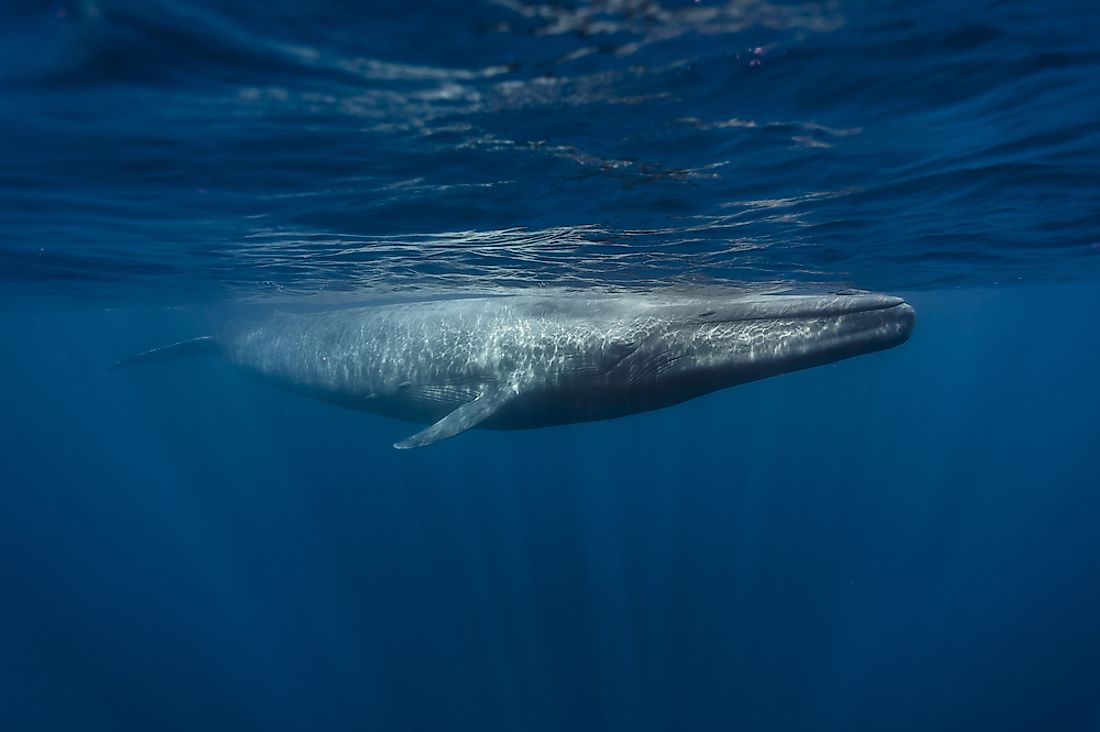5 Endangered Ocean Animals

Ocean animals are major contributors to the sustainable food chains of marine environments. The existence of major ocean animals has been endangered by human action. Illegal fishing and climate change further deprive these animals of their habitats.
5. Fin whale

The fin whale is the second largest animal on the planet. The lower left jaw of the fin whale is black and the lower right of its jaw is white. Their population was largely affected by commercial whaling which occurred up until 1979. They have since been rare species in the North Atlantic. Currently, environmental changes, climate change, and toxins are the biggest factors affecting their habitats. This whale is still hunted in Iceland. WWF is working with the International Whaling Commission (IWC) to find solutions in reducing threats and encouraging nations to ban whale hunting.
4. Bluefin tuna

Bluefin lives for up to 40 years and are the largest type of tuna. The structure of their body is built for speed as that is the only way they can catch their prey. The fishing of bluefin is popular in Asia, where the Atlantic Bluefin is a popular and expensive delicacy. It is primarily because of this commercial reason that it is rapidly reducing in numbers. Besides providing a source of food, they also maintain the balance in the marine food chain as a top predator. It has been threatened by the lack of enforcement of fishing laws and limits. WWF is studying the species to know more about its biology and migration so as to help in its breeding as a way of increasing its population.
3. Blue whale

Weighing in at an average of 200 tons, the blue whale is the biggest animal on the planet. It eats about 4 tons of krill daily. A loud animal, their whistles can be heard from hundreds of miles away. Much like bluefin tuna, blue whales are also at the top of the food chain, and are an important factor in the health of marine life. The blue whale was a whaling target in the 20th century before its commercial targeting was stopped in 1966. This whale is notably endangered by toxins that are released to their habitats. Climate change is contributing to the completion of their main food source of krill.
2. Vaquita
A vaquita is a type of porpoise that is only found in the northern section of the Gulf of California. They are on the brink of extinction. Many vaquitas are caught in nets through illegal fishing operations. It is the most endangered water animal in the world with its population thought to be composed of around 60 individuals. If fishing in the protected areas does not cease, this mammal could be in extinct by 2018. The WWF has therefore called upon Mexico to fully implement the ban on fishing in the protected areas.
1. Hawksbill turtle

The name hawksbill comes from the pointed and narrow necks that these turtles possess. Their shells have beautiful patterns, which makes them a popular choice for the black market, where they are sold commonly as tortoiseshell. Hawksbills are found in the coral reefs of the tropical oceans around the world. They feed on sponges and small jellyfish by use of their pointed beaks.
It is thought that this type of reptile has lived in the seas for over 100 million years. Hawksbill help in maintaining the health of the coral reefs since they remove sponges in it, which enables reef fish to access food. However, the illegal wildlife trade has rendered the hawksbill turtle a critically endangered species. They are more hunted for their shell that is used commercially for making jewellery and ornaments. World Wildlife Fund (WWF) has therefore resorted to working around the world to protect sea turtles. They do so by patrolling and encouraging their conservation.







